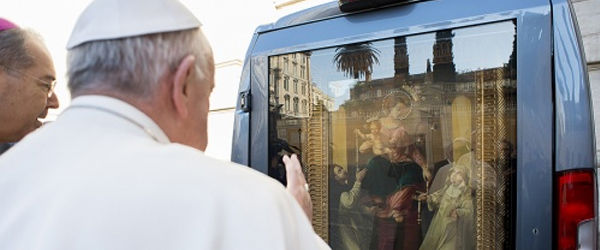Asia is a vast continent of diverse peoples, languages, cultures, and religions. Home to Hinduism, Buddhism, Jainism, Sikhism, Shintoism, Taoism and Confucianism, it is also home to Judaism, Christianity and Islam (as the Near East and the Middle East are geographically a part of Asia). Moreover, early Christianity traveled further East along trade routes and impacted Asia long before Western missionaries arrived. Christianity is, therefore, an Asian religion. But although the roots of Christianity are Asian, Christianity is often perceived as a new, foreign religion in Asia, as much a bearer of strange beliefs as it is a bearer of a Western cultural and political agenda. Western interests and concerns dominated Vatican II. Nevertheless, the Asian bishops did participate and let their voices be heard, particularly on liturgical renewal and inculturation. Although the Asian bishops had minimal impact on Vatican II itself, the Council set the stage for a massive shift from a Western Catholic Church in Asia to a distinctively Asian Catholic Church. While the liturgical changes had an immediate effect on the Asian churches (as the use of local languages, songs, vestments and cultural practices like bowing visibly altered Asian Catholic liturgy and practice), the formation of the Federation of Asian Bishops’ Conference (FABC) in 1972 has had the most significant impact on the identity and mission of the Asian churches in the third millennium. This non-binding body of bishops is a Vatican II-inspired congregation that has worked tirelessly to grow “a new way of being church,” a church that emerges from the ground of Asia itself. For the Asian bishops, the Church must dialogue with the three primary characteristics of the Asian context: religions, cultures and the poor. First, the bishops recognize that the reality of the profound religious diversity, as well as Christianity’s minority status in most Asian countries, has made interreligious dialogue a necessary feature of Asian Catholic — and the Asian Catholic church’s — life. Second, although Christianity is an Asian religion, the Romanization and Europeanization of the Catholic Church have significantly altered the face of the Church. Everything from Catholic doctrine, practices, and polity are dominated by Western approaches. The Church in Asia is therefore often under suspicion, accused of having Western sympathies and goals. The Asian bishops have insisted that the Western approach and preoccupations of the Church cannot work for Asia. They have pushed for real inculturation of the whole Church. Finally, the bishops have consistently sought to address injustice in Asia, from devastating poverty and health crises to political oppression, to persecution of Christians, to sexism in the church and wider society. They have emphasized the role of women and the laity as essential for building a just church and world. This “triple dialogue” of the Church with religions, cultures and the poor emphasizes the role of the local church in understanding and responding to the primary realities of the Asian context.The dialogue with religions, cultures and the poor help to define the Church’s mission: to proclaim and build the Kingdom of God. The task of announcing the Kingdom of God harkens back to Jesus’ own proclamation of his Father’s Kingdom, as well as emphasizes the communal task of building a just world. For the bishops, a regnocentric (Kingdom-centered) mission is more appropriate to Asian religious and cultural plurality and maintains focus on the joint spiritual, cultural and social needs of Asian Catholics.There has been some pushback from the Vatican on the Asian bishops’ priority of the local church and dialogical openness to religious plurality, inculturation and Asian liberation theology. The shift from a strong Christocentric (Christ-centered) mission to a more fluid, open-ended Kingdom-centric mission seems to some a dilution of Catholic faith. But attentiveness to local situations and needs does not mean that the Asian bishops deny the truth of Jesus as unique and universal savior. Moreover, the suppression and persecution of minority Catholic communities in Asia is of serious concern. And it is not only Catholics in Communist countries under threat. Growing militant fundamentalism, anti-Western and anti-Christian sentiment, and the unfair association of Catholics with non-Catholic Christians who practice aggressive proselytization further threaten Catholic populations across Asia. The bishops are acutely aware that an exclusivist Christology can exacerbate delicate and even dangerous situations for Asian Catholics. The local, dialogical and regnocentric approach of the Asian bishops strikes an important balance for the Church in Asia and paves the way for the Asian Church in the third millennium. Although the Asian Church is discovering a “new way of being church” in Asia, it is also helping us all to decenter our Western assumptions about Catholic faith and rediscover the Asian roots of ChristianityDr. Tracy Sayuki Tiemeier is assistant professor of Theological Studies at Loyola Marymount University. Holding a Ph.D in Systematic Theology (with a minor in Comparative Theology) from Boston College, she teaches and researches in the areas of Comparative Theology, Theological Anthropology, Faith and Cultures, Asian and Asian American Theology, Feminist Theology, Women in Religion, and Hinduism.{gallery width=100 height=100}gallery/2012/1019/vatasian/{/gallery}

